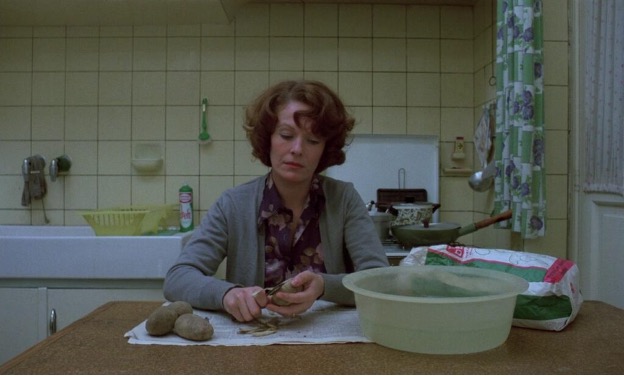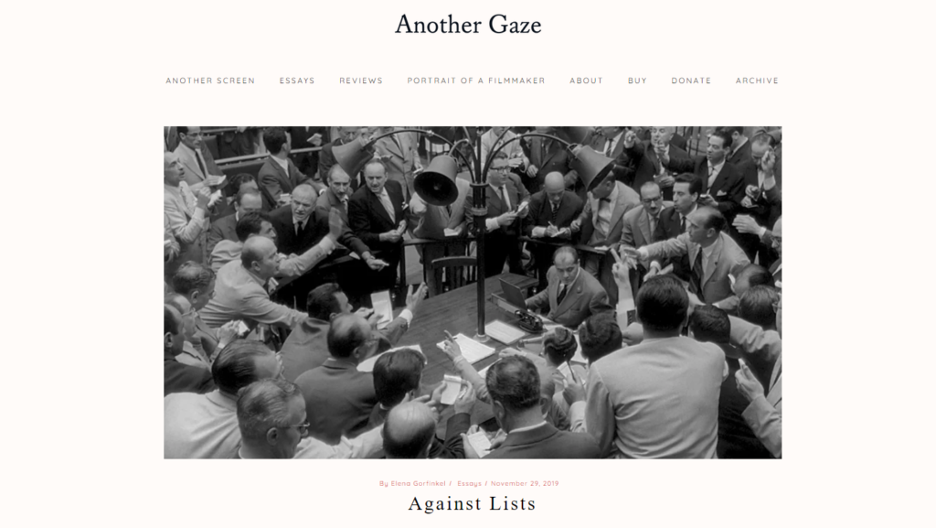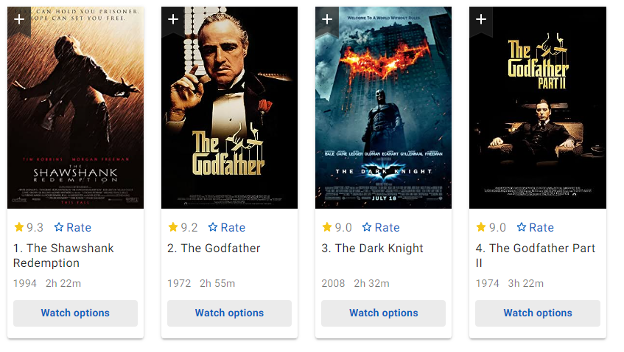My passion for cinema began during adolescence and grew through IMDb’s Top 250 Movies list.
Entries One to Four of IMDb’s Top 250 Movies (L-R): The Shawshank Redemption, The Godfather, The Dark Knight, The Godfather Part II.
I remembered entries one through twenty by heart, often reciting them during spirited debates of people’s favourites. Martin Scorese’s The Departed was always my go-to pick, coming in at a respectable 45th place – not as basic as Forrest Gump, not something ‘old’ like The Great Escape.
I had objectionably great taste in film, which could not be argued with, and was always destined to be a critic.
Thankfully, after growing up slightly, I began to see some faults with my thought process. If Film 4 hadn’t been my main source for accessing different titles, I wouldn’t have given anything below a 7/10 my time. Therefore, I was in disbelief upon discovering that Ben Wheatley’s horrific masterpiece Kill List only averaged a 6.4 rating.
In the same vein, there are several ‘best movies of all time’ which happen to correlate with popular culture from the last decade. Each of them deserve to be in the conversation, but the weighting will always be skewed to modern releases. On the contrary, some of these films are also review-bombed by trolls, so their valuations should be taken with a pinch of salt.

Delphine Seyrig in Jeanne Dielman, 23 quai du Commerce, 1080 Bruxelles. Still from FILMGRAB.
Following a similar introduction into cinema as me is Thomas Flew. Reading 1001 Movies You Must See Before You Die eventually led him to becoming Editorial Assistant for Sight & Sound Magazine. He discussed how the publication’s critics’ poll has evolved since 1952 on the Cinema Rediscovered panel Every List, Everywhere, All at Once: Film Culture in the era of Lists – chaired by critic Tara Judah.
Collated once a decade, the Sight & Sound poll was reserved for a select group of highly regarded critics. 25 of 63 established cinephiles put Bicycle Thieves as their number one in the inaugural list, before 145 reviewers solidified Citizen Kane at top spot for the next sixty years.
So, if Roger Ebert deemed the poll “the only one most serious movie people take seriously”, will watching these 100 films make my cinematic taste objectionable again?
Well, whilst Sight & Sound may have the ‘prestige’ over IMDb users, they still came under scrutiny on who participated. Flew explained how the 2022 pool expanded to 1,600 voters in order to diversify participants. Considering Jeanne Dielman, 23 quai du Commerce, 1080 Bruxelles then became the first feature directed by a woman to top the list shows a progressive step in the right direction.
How can we quantify ‘greatest’ anyway? Sight & Sound leaves it open to the artist’s interpretation, using their April 2023 issue to highlight top picks chosen by just one person. Where does Benny Safdie’s high valuation of Requiem for a Heavyweight rank amongst more popular choices for example?

Alongside my tongue-in-cheek ‘objectionable’ opinion, top 100s may set a dangerous precedent towards film criticism. Dr Elena Gorfinkel addressed this matter in her 2019 manifesto Against Lists as well as the Cinema Rediscovered panel. Essentially, there’s more concern regarding which piece is perceived better than offering a nuanced opinion on what the art means to you.
She then remarked on the exclusivity of lists too, with many featuring at best one token woman out of ten. When you then consider the many other underrepresented filmmakers that don’t get a mention at all, Gorfinkel’s manifesto sums it up nicely: “Lists are not neutral or innocent or purely subjective”.
Yet, compiling lists of films together results in an invaluable resource for Arika Oke’s role as Executive Director of Knowledge and Collections at BFI. Similar to the film festival, she detailed how archival work is trying to find different angles for repertory pieces in response to contemporary work. There is an immense catalogue to delve through, so lists are used to navigate uncharted territory instead of pitting art against each other.
This point was echoed by Ella Kemp, London Editor of Letterboxd. With the tagline ‘Social film discovery’, Letterboxd is focused on curating what you’ve seen and sharing must-watches amongst friends. Sure, ratings remain a crucial aspect to the site (they also have a top 250, encountering similar issues with IMDb regarding Across The Spider-verse’s popularity surge), but my memory is more reliant on the diary rather than their reviews.

Miles and Gwen in Across The Spider-Verse (Sony Pictures).
The other function Kemp highlighted was user-created lists, which can be made by anyone about any topic without using the star system. These have ranged from itemising films at Cinema Rediscovered for research afterwards to help find short features when you’re in a rush. It certainly doesn’t solve Gorfinkel’s concerns, but there’s now a larger space for inclusivity within the community’s lists.
Ultimately, whether they’re a rage-inducing hobby or an archivist’s reference, lists are a necessary evil. They’ve provided me with some structure to broaden my horizons, but you could argue that’s restricted my viewing habits. They allow me to produce easily digestible posts on Instagram which likely discourages people from reading my full opinion.
Either way, I look forward to stressing over ranking my ‘Watched at Cinema Rediscovered’ list.
